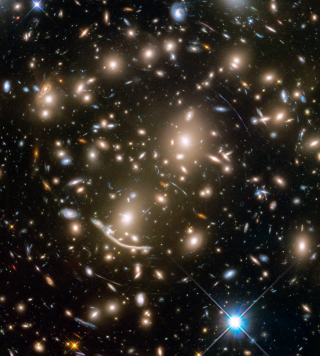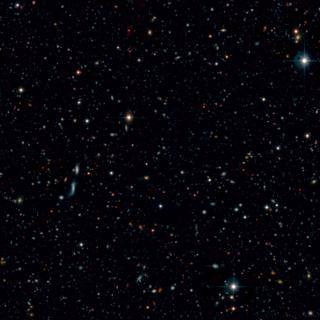Bibcode
López-Sanjuan, C.; Cenarro, A. J.; Hernández-Monteagudo, C.; Arnalte-Mur, P.; Varela, J.; Viironen, K.; Fernández-Soto, A.; Martínez, V. J.; Alfaro, E.; Ascaso, B.; del Olmo, A.; Díaz-García, L. A.; Hurtado-Gil, Ll.; Moles, M.; Molino, A.; Perea, J.; Pović, M.; Aguerri, J. A. L.; Aparicio-Villegas, T.; Benítez, N.; Broadhurst, T.; Cabrera-Caño, J.; Castander, F. J.; Cepa, J.; Cerviño, M.; Cristóbal-Hornillos, D.; González Delgado, R. M.; Husillos, C.; Infante, L.; Márquez, I.; Masegosa, J.; Prada, F.; Quintana, J. M.
Bibliographical reference
Astronomy and Astrophysics, Volume 582, id.A16, 9 pp.
Advertised on:
10
2015
Journal
Citations
11
Refereed citations
11
Description
Aims: The relative cosmic variance (σv) is a
fundamental source of uncertainty in pencil-beam surveys and, as a
particular case of count-in-cell statistics, can be used to estimate the
bias between galaxies and their underlying dark-matter distribution. Our
goal is to test the significance of the clustering information encoded
in the σv measured in the ALHAMBRA survey.
Methods: We measure the cosmic variance of several galaxy populations
selected with B-band luminosity at 0.35 ≤ z< 1.05 as the intrinsic
dispersion in the number density distribution derived from the 48
ALHAMBRA subfields. We compare the observational σv
with the cosmic variance of the dark matter expected from the theory,
σv,dm. This provides an estimation of the galaxy bias
b. Results: The galaxy bias from the cosmic variance is in
excellent agreement with the bias estimated by two-point correlation
function analysis in ALHAMBRA. This holds for different redshift bins,
for red and blue subsamples, and for several B-band luminosity
selections. We find that b increases with the B-band luminosity and the
redshift, as expected from previous work. Moreover, red galaxies have a
larger bias than blue galaxies, with a relative bias of brel
= 1.4 ± 0.2. Conclusions: Our results demonstrate that the
cosmic variance measured in ALHAMBRA is due to the clustering of
galaxies and can be used to characterise the σv
affecting pencil-beam surveys. In addition, it can also be used to
estimate the galaxy bias b from a method independent of correlation
functions.
Based on observations collected at the German-Spanish Astronomical
Center, Calar Alto, jointly operated by the Max-Planck-Institut für
Astronomie (MPIA) at Heidelberg and the Instituto de Astrofísica
de Andalucía (CSIC).
Related projects

Galaxy Evolution in Clusters of Galaxies
Galaxies in the universe can be located in different environments, some of them are isolated or in low density regions and they are usually called field galaxies. The others can be located in galaxy associations, going from loose groups to clusters or even superclusters of galaxies. One of the foremost challenges of the modern Astrophysics is to
Jairo
Méndez Abreu

Evolution of Galaxies
Galaxy evolution is a crucial topic in modern extragalactic astrophysics, linking cosmology to the Local Universe. Their study requires collecting statistically significant samples of galaxies of different luminosities at different distances. It implies the ability to observe faint objects using different techniques, and at different wavelengths
Jorge
Cepa Nogue